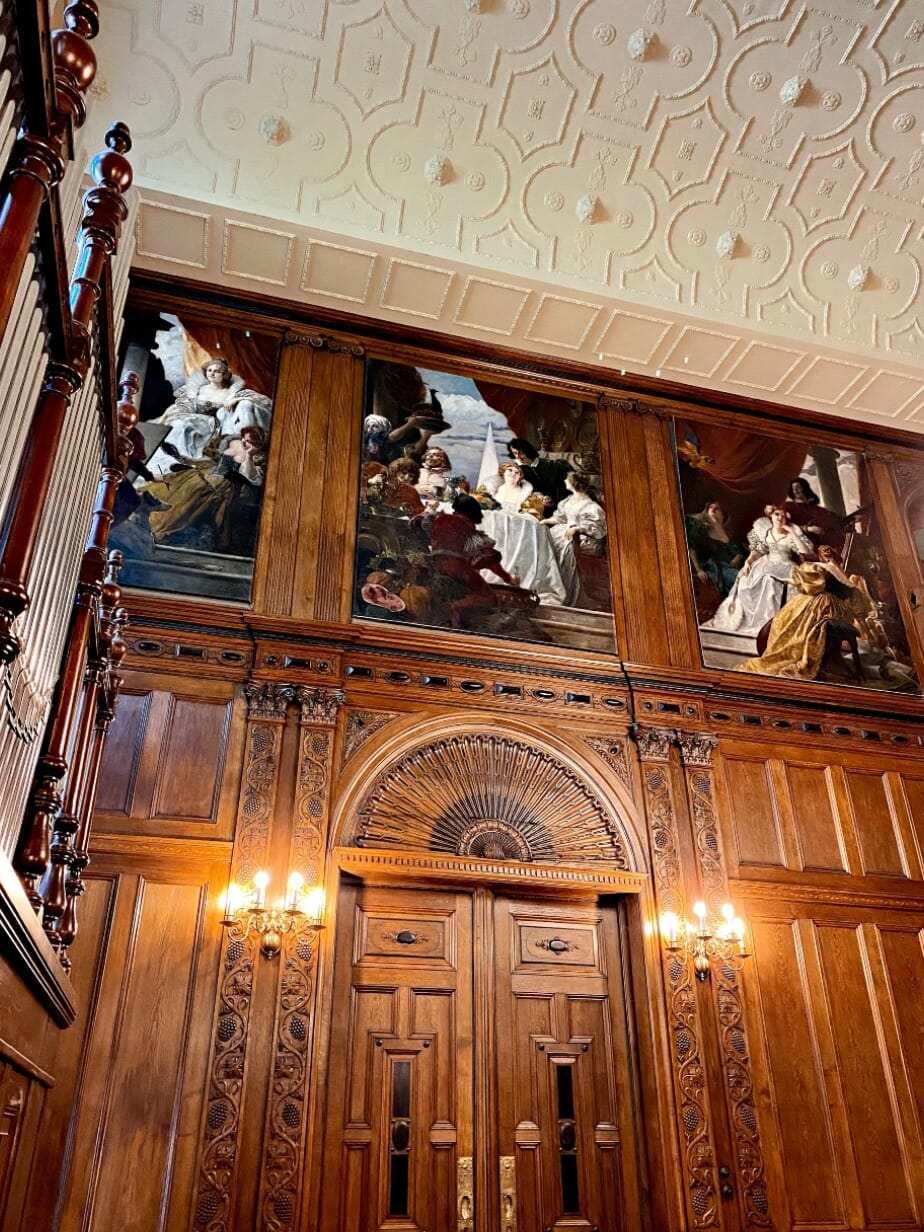After 92 years, the paintings “Tasting”, “Seeing” and “Hearing” return to their original hanging place in the Villa Seligmann.
Exclusively for the new family residence of Siegmund Seligmann, the painter Ferdinand Wagner created the painting conglomerate “The Five Senses” in 1906. The neo-baroque female allegories were part of the original decoration of the villa until 1931. After 92 years, the three preserved large-scale oil paintings returned to their original hanging place in the Great Hall of Villa Seligmann.
Seeing, 1906, oil on canvas on wood, ca. 239 x 139 cm
Tasting, 1906, oil on canvas on wood, approx. 238 x 198 cm
Listening, 1906, oil on canvas on wood, ca. 238 x 190 cm
The return was announced in a press conference with the participation of Lower Saxony’s Minister of Culture Falko Mohrs, among others, on April 18, 2023, and celebrated with a ceremony on April 20, 2023.
The purchase of the paintings was made possible by five sponsors:
Lower Saxony Savings Banks Foundation
Lower Saxony Foundation
Cultural Foundation of the Federal States
Lower Saxony Ministry for Science and Culture
S-HannoverFoundation
The paintings can be viewed in conjunction with a visit to the Villa Seligmann events.

The Villa Seligmann was built from 1905 to 1906 according to the plans of the Hanoverian architect
Hermann Schaedtler
for Siegmund Seligmann (1853-1925) as a family residence. Siegmund Seligmann was a businessman, entrepreneur and the first general manager of Continental AG in Hanover, which under his leadership grew into one of the largest rubber and tire producers in Germany.
History
The villa remained the property of the Seligmann family until 1931, the same year Seligmann’s widow Johanna sold numerous art and valuable objects from the house inventory, including Wagner’s allegories of the senses. In the auction of November 1931, the “Five Senses” became the property of a factory owner friend and remained in the family’s possession in Hanover. Two of the five allegories (“Touching” and “Smelling”) were destroyed in the house of the new owner during World War II. The three surviving paintings are titled “Hearing”, “Seeing” and “Tasting”.
In 2006, the Siegmund Seligmann Foundation acquired the villa, and since 2012 it has been a place of vibrant Jewish culture as the House of Jewish Music. During the restoration of the villa, areas on the walls in the stairwell were deliberately left free for Wagner’s murals. With the purchase of the three murals, Villa Seligmann is now returning the works to their original exhibition location and is thus able to reconstruct a central part of the historic décor.
The history painter who trained in Italy in 1867/68
Ferdinand Wagner
specialized in large-scale murals. His works were mostly wall-mounted, immobile artworks or large-scale oil paintings made for pre-defined exhibition venues. Most of his works were lost due to war damage. Still preserved today are, among others, the ceiling painting in the banqueting hall of Bückeburg Castle, the decoration of the Great Hall in the Hofbräuhaus in Munich, and depictions in the tower hall of the New City Hall in Hamburg. He was one of the leading painters of his time, creating decorative paintings for castles of the nobility and buildings of the Empire.
“The Villa Seligmann is one of the few testimonies of Jewish bourgeois life in Hanover from the time before the Holocaust. With the purchase of three paintings by Ferdinand Wagner, the furnishings are supplemented by important testimonies. The Villa Seligmann is thus exemplary for a representative residential house of the German-Jewish upper middle class in the imperial era, in which today Jewish culture is cultivated and the German-Jewish entrepreneur Siegmund Seligmann and Jewish life in Hanover are remembered.”
(Prof. Dr. Markus Hilgert, Secretary General of the Kulturstiftung der Länder)
Source: Press release of the Kulturstiftung der Länder from 18.04.2023